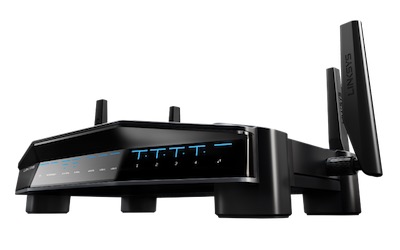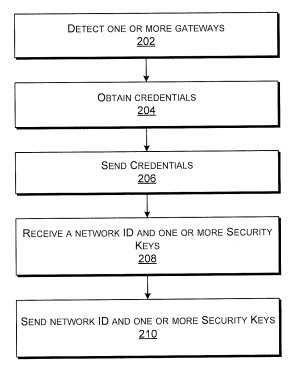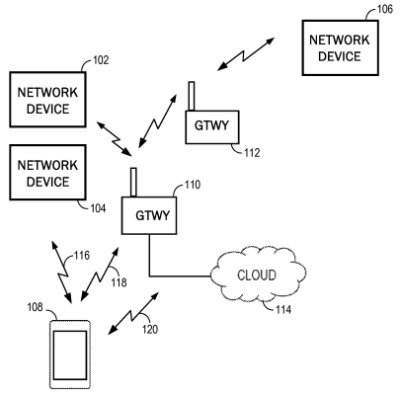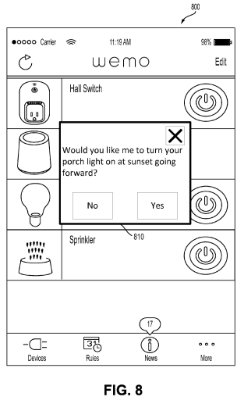 One of the next-generation technologies seen at the 2017 Consumer Electronics Show in Las Vegas was the Linksys WRT32x router. A high-powered piece of hardware, the WRT32x has a 1.8GHz dual-core processor and a bandwidth of 3,200 megabits per second (Mbps) which greatly improves the experience of downloading streaming video game content, but the biggest feature is its adaptability with Rivet Network’s Killer Mode gaming feature.
One of the next-generation technologies seen at the 2017 Consumer Electronics Show in Las Vegas was the Linksys WRT32x router. A high-powered piece of hardware, the WRT32x has a 1.8GHz dual-core processor and a bandwidth of 3,200 megabits per second (Mbps) which greatly improves the experience of downloading streaming video game content, but the biggest feature is its adaptability with Rivet Network’s Killer Mode gaming feature.
The average gamer needs about 20 to 80 megabytes (MB) of data per hour compared to video streaming that requires 3 gigabits (GB) per hour. The way data is passed to the computer though can create a troublesome “stall” or “lag” in the gaming experience. Online data flows from the router to the computer in small “packets” of data. While gaming data uses relatively small packets, a loss of even one of these can harm the game-play. Imagine if the packet of data that is lost included a “jump” command which would launch the player over a deadly pit, but because the command never reaches its online destination, the player dies. Also, if another computer on the network is downloading or streaming video, precious bandwidth is being directed toward non-gaming activity and that leads to lag, a result of gaming data packets being lost because of too much activity on the network.
The Killer Mode feature in the Linksys router prioritizes packets of gaming data so that there are no moments of lag or stalling due to the process of “queuing” data. Queuing is the process in which data is organized so it has to wait its turn before traveling through the network creating a traffic jam of data packets. The Killer Mode organizes the data differently and this innovation speeds up the process of bringing gaming packets to the computer device creating lower latency. The gamer can now play without interruptions despite any other activity on the network.
On January 4, 2017 Linksys announced it had teamed up with Rivet Networks and effectively brought the Killer Mode technology directly into a router that is needed to prioritize algorithms coming from the computer to the network. But the networking technologies seen in the Linksys WRT32x router demonstrate only one aspect of Belkin International’s developments in this sector. Belkin is the parent company ob Linksys, and its technologies enable better network management for devices including gaming PCs or mobile devices, as can be seen by U.S. Patent No. 9497196 titled IOT Device Environment Detection, Identification and Caching. This patent describes a process in which network devices can determine the status of other devices, such as mobile phones, and continuously update that status through a network.

Specifically, a communication that shows a mobile device is associated with any other device on the network will update any detected status of that mobile device. This described process can also automatically activate instructions stored on the computing device once it’s been recognized by the network. These instructions may include transmitting that the device is associated with another device on the network and show its current status or other set of instructions.
U.S. Patent No. 9384075, Coordinated and Device-Distributed Detection of Abnormal Network Device Operation, details techniques that can detect abnormal network device operation and identify suspicious activity associated with a device on the network. One example of this would involve a situation in which two lamps in a living room are installed on a network, and one of them begins to flicker. In that situation a user would have to intervene.

If both lamps flicker, the user would usually have to suspend all activity on the network to find out what is wrong with the network device that displays the abnormal activity. The patent describes a way in which a computer-implemented method may intervene in this situation by using corresponding detection data from multiple network devices to determine if there is abnormal activity on the network, thereby making the user intervention unnecessary.
U.S. Patent No. 9299029, Network Device Predictive Modeling, describes techniques and systems that provide predictions based on cooperation by one or more network devices. As in other technologies patented by Belkin International, this patent protects a process in which an automated system can be informed by other devices on the network.

For example, an option to turn off a sprinkler system is offered to the user of the network. That option is the result of the cooperation between network devices, in this case a computing device linked to the Internet, a sprinkler system, and a device such as a phone that brings the option directly to the user.
‘029 describes a situation in which there may be several network devices that provide information to the user. It protects a method in which a network that uses both interaction data and contextual data can receive and send information. Interaction data can be received and sent and its function is to be the main interactive instrument that notifies the user of a prediction and the user’s choice in the face of this prediction. A prediction is the result choices made by the user over time. If the same choice is made consistently, the network will automatically follow this prediction in a similar situation without notifying the user. A prediction can be triggered depending on contextual data that is received from a different source on the network. It is based on the analysis of the interaction and contextual data and finding a correlation between the two.
Such a network might include a game console that handles the input from the user based on what is happening in the game, and a computing device that searches for tips and suggestions online. In the case of the gaming console example, interaction data might be the choice of which character to play as. Contextual data would be information of how to use that character to maximize the experience of the game. Different situations would trigger predictions that a user can apply or not. Both types of data would be sent and received within the network containing multiple computing devices and one router. The patent describes how a network system can send and receive data from any number of network devices to better inform the user of how to proceed when contextual and interaction data is reviewed.

![[IPWatchdog Logo]](https://ipwatchdog.com/wp-content/themes/IPWatchdog%20-%202023/assets/images/temp/logo-small@2x.png)

![[Advertisement]](https://ipwatchdog.com/wp-content/uploads/2024/04/Patent-Litigation-Masters-2024-sidebar-early-bird-ends-Apr-21-last-chance-700x500-1.jpg)

![[Advertisement]](https://ipwatchdog.com/wp-content/uploads/2021/12/WEBINAR-336-x-280-px.png)
![[Advertisement]](https://ipwatchdog.com/wp-content/uploads/2021/12/2021-Patent-Practice-on-Demand-recorded-Feb-2021-336-x-280.jpg)
![[Advertisement]](https://ipwatchdog.com/wp-content/uploads/2021/12/Ad-4-The-Invent-Patent-System™.png)







Join the Discussion
No comments yet.